Table of contents
The sweet and sour, slightly bitter grapefruit ( Citrus paradisi) is often eaten raw (preferably organic) for breakfast or as a snack. It also tastes great when pressed into juice. It is important to note any interactions with medication.
Use in the kitchen
Grapefruits ( Citrus paradisi) are spherical, 10-15 cm large citrus fruits. Depending on the variety, origin and growing conditions, the fruits differ in color, number of seeds and taste. They have a smooth, white-yellowish to orange peel. Grapefruits are roughly divided into white and red varieties according to the color of the flesh. White grapefruit varieties have pale yellow flesh, while the colors of red varieties vary from pink to deep red. While some fruits are seedless, others contain white, elliptical, pointed seeds. Grapefruits have a characteristic, sour to sweet-sour taste with a light to distinctly bitter note. A red grapefruit is less bitter than a white grapefruit. 1
How do you eat grapefruit? Like oranges, grapefruits can be eaten fresh or made into juice. The raw fruit is often eaten for breakfast - you can spoon the flesh segments out of the fruit halves after separating them with a knife. Some people sweeten the halves with granulated sugar, brown sugar, a little honey or agave syrup, but we definitely don't recommend this. Instead, try refining the taste with a little cinnamon, nutmeg or clove powder. 2 You can of course peel a grapefruit like an orange and remove the segments with your fingers or fillet them with a knife - the pieces make a healthy snack, but they also go well in muesli ( pea muesli) or soy yoghurt. Grapefruit juice is also popular on the breakfast table - pure, mixed with other juices or as a smoothie (e.g. tart-sweet morning smoothie with grapefruit and ginger, drink made from beetroot, grapefruit, turmeric and romaine lettuce). Grapefruits can also be processed into tart jams and jellies.
You can also make vegan, fruity desserts with the bittersweet fruit. It tastes great in fruit salads, creams, and on cakes and pies. Grapefruit halves baked in the oven (e.g. with a little maple syrup or a cinnamon-sugar mixture) are a tasty winter dessert. If you like, you can sprinkle the baked halves with nuts (e.g. walnuts), seeds (e.g. pine nuts, pistachios) or chopped peppermint and serve with vegan vanilla ice cream.
The taste of grapefruit harmonizes not only with sweet, but also with salty dishes - especially with vegan salads. Tasty combinations are: chicory and radicchio with radishes, spinach or rocket with oranges and avocado, lamb's lettuce with walnuts, red cabbage with apple or fennel. A citrus salad with sumac dressing, barberries and pistachios or a rice salad with shallots and green beans are also recommended. Grapefruit fillets also spice up cooked vegetables such as savoy cabbage, broccoli or fennel.
By the way: peels of raw organic grapefruits can be dried and used for seasoning or candied.
Vegan recipe for grapefruit-avocado salad with chickpeas
Ingredients (for 4 people): 2 grapefruits (raw, organic), 1 avocado, 200 g spinach, approx. 120-150 g cooked chickpeas (small can), 1 lime, 4 tbsp tahini, 8 tbsp beetroot juice, some salt andpepper.
Preparation: Peel the grapefruit and fillet the flesh segments. Halve the avocado, remove the pit and cut into thin slices. Wash the spinach and spin dry. Rinse the chickpeas. For the dressing, mix the tahini and beetroot juice, add the squeezed juice of a lime and season with salt and pepper. Place the spinach on a plate and arrange the grapefruit fillets, avocado slices and chickpeas on top. Pour the dressing over the vegan salad and serve.
Vegan recipes with grapefruit (raw) can be found under the note: " Recipes that have the most of this ingredient ".
| Not only vegans or vegetarians should read this: Vegans often eat unhealthily. Avoidable nutritional mistakes. |
Purchasing - Storage
Most supermarkets (e.g. Coop, Migros, Denner, Volg, Spar, Aldi, Lidl, Rewe, Edeka, Hofer, Billa) sell grapefruits, both white and red varieties. In organic supermarkets (e.g. Denn's Biomarkt, Alnatura) the fruit is available in organic quality. In the DA-CH countries, grapefruits are imported goods, as they are not grown in these latitudes. They can be found in stores almost all year round, with the main season in southern Europe being from October to March.
The availability of grapefruits (raw) varies depending on the size of the store, catchment area, etc. Our recorded food prices for the DA-CH countries can be found above under the ingredient image - and by clicking on them you can see their development at various suppliers.
Storage tips
Grapefruits will last for about a week at room temperature. They can be stored for several weeks in a cool, dry cellar or in the vegetable compartment of the refrigerator. Sliced grapefruits should be wrapped in foil, stored in the refrigerator and consumed within two to three days.
Ingredients - Nutritional values - Calories
What are the nutritional values of grapefruit? Grapefruits (raw) are low in calories and fat, with 32 kcal and 0.1 g fat per 100 g. Carbohydrates are 8.1 g/100 g, of which 7 g are sugar. 0.63 g of protein can be found in 100 g of grapefruit. 3 The following are three notable grapefruit nutrients.
What vitamins does a grapefruit contain? The vitamin C (ascorbic acid) content in raw grapefruit is 34 mg/100g (43% of the daily requirement). This is similar to that of mango (36 mg/100g). Other citrus fruits, such as limes (29 mg/100g) and tangerines (27 mg/100g) contain slightly less of the vitamin, while clementines (49 mg/100g), lemons (53 mg/100g), oranges (53 mg/100g) and grapefruits (61 mg/100g) contain slightly more of the vitamin. Yellow bell peppers contain over five times as much vitamin C, at 184 mg/100g. 3
139 mg of potassium are found in 100 g of grapefruit (7% of the daily requirement). Lemons (138 mg/100g) and mandarins (166 mg/100g) have a similar content. Fennel seeds, of which only small amounts are used, contain a particularly high amount of potassium at 1694 mg/100g. 3
Raw grapefruit contains 46 µg of vitamin A per 100 g (6% of the daily requirement). A similar amount can be found in papayas (47 µg/100g) and tangerines (34 µg/100g). Carrots contain significantly more, at 835 µg/100g. 3
Citric acid is the main acid, accounting for 39-64% of the total organic acid content in grapefruit, followed by quinic acid, malic acid, tartaric acid, oxalic acid and aconitic acid. 1
Grapefruits contain carotenoids (β-carotene, α-carotene, β-cryptoxanthin, zeaxanthin, lutein, lycopene). The ratio between zeaxanthin (yellow), β-cryptoxanthin and lycopene (red) determines the color of the fruit flesh, namely yellow, orange or red. Other important secondary plant substances contained in grapefruit are flavonoids (naringin, narirutin, poncirin, rutin), furocoumarins and limonoids (nomilic acid, limonin glycoside, nomilic acid glycoside, nomilin glucoside), which are responsible for the characteristic bitter taste. Limonene and nootkatone provide the unique scent. 1
The complete ingredients of grapefruit (raw), the coverage of the daily requirement and comparison values with other ingredients can be found in our nutrient tables. In the article Nutrients explained you will get a detailed insight into the topic.
Health effects
Grapefruit peels are known to have antimicrobial, antiparasitic, insecticidal, antioxidant and cardiovascular effects. Grapefruit seeds also have antibacterial properties. They have a positive effect on damaged digestive systems, improve hematological values and have hypoglycemic effects. Grapefruit juice showed similar reactions to peels and seeds in in vivo studies. In addition, health-promoting effects on the digestive and cardiovascular systems as well as on metabolic syndrome have been described, for which the oils, flavonoids, limonoids and furocoumarins contained in the juice are responsible. 4
Grapefruit juice has a positive effect on bone health and may be helpful in the treatment of osteoporosis, as shown in several in vivo models. The fruit is also used as a treatment for ulcerative colitis (chronic inflammatory bowel disease). 1
Many citrus fruits (eg grapefruits) and apples contain the plant-based fiber pectin. This is found in the pulp and in the white layer directly under the peel and between the segments. Pectin lowers cholesterol levels and protects arteries. 5
Can grapefruit help you lose weight? A number of studies have examined the effects of grapefruit on obesity and weight loss. Clinical and in vivo studies have confirmed that grapefruit juice and grapefruit pulp protect against obesity-related complications by reducing insulin resistance, lipid accumulation, hypertension and reducing oxidative stress. 1
100% grapefruit juice contains no added sugar, making it one of the healthier beverages that can replace sugar-sweetened beverages in the diet. Since total fruit consumption is low in adults and children, citrus juices can help meet daily fruit intake recommendations. Moderate intake does not appear to have a detrimental effect on weight, provided intake is balanced with respect to overall diet and level of physical activity. The Robert Wood Johnson Foundation 's daily juice consumption recommendation suggests consuming up to 4 ounces (118 ml) for children ages 2 to 4 years, up to 6 ounces (177 ml) for children ages 5 to 10 years, and up to 8 ounces (237 ml) for children ages 11 and older and adults. Parents should monitor fruit juice consumption in children and adolescents, especially those who are overweight or obese. 6
Dangers - Intolerances - Side effects
Grapefruits can modulate the bioavailability of medications and cause side effects. 7 According to a 2013 study, this is the case for more than 85 medications. Of these, 43 have interactions that can lead to serious adverse effects. Drugs that interact with grapefruit all have the following characteristics: They are taken orally, they have very low to medium bioavailability and the metabolism (degradation) occurs through the enzyme cytochrome P450 3A4 (CYP3A4). Grapefruits and certain related citrus fruits ( pomelo) can irreversibly inhibit CYP3A4 in the gastrointestinal tract. 8
Citric acid attacks tooth enamel, whether as a natural component of a food or as an additive (E 330). After eating or drinking acidic foods, you should not brush your teeth vigorously, as this will cause increased abrasion of the upper layers of the teeth. It is recommended to rinse your mouth with water to dilute the acid and speed up the replacement of the dissolved minerals. 16
An allergy to citrus fruits such as grapefruit is rare, but can occur.
Ecological footprint - animal welfare
The ecological footprint of a food depends on various factors. The type of agricultural production (conventional vs. organic), seasonal, regional, domestic production or import by truck, ship or plane, different types of packaging and whether the goods are fresh or frozen all play a decisive role. According to the Danish climate database, the CO 2 footprint of raw grapefruits in 2024 is 0.72 kg CO 2 eq/kg (2021: 0.86 kg CO 2 eq/kg). For 1 kg of oranges, the value is 0.53 kg CO 2 eq/kg. 9
According to a Dutch study from 2011, a total of 506 litres of water are needed to produce 1 kg of raw grapefruit. The water consumption for 1 kg of grapefruit juice is 675 litres of water. 10
Organic grapefruits are preferable because organic production avoids the use of chemical-synthetic pesticides and fertilizers that are harmful to health and the environment. Air freight should also be avoided (due to the massive greenhouse gas emissions). Choose grapefruits from southern Europe that were transported overland.
Worldwide distribution - cultivation
Where does grapefruit come from? Grapefruit originated on the Caribbean island of Barbados. Botanist James Macfadyen provided the first scientific description of grapefruit in 1837 and named it Citrus paradisi. Its evolutionary history is well documented and molecular markers strongly suggest that it arose from a natural cross between pomelo ( Citrus maxima) and sweet orange ( Citrus sinensis). The original fruit was very seedy and had whitish flesh. Since the fruit was introduced to Florida, new varieties have been bred continuously, with seedless fruits with red flesh being a primary goal. 1,2,7,11
Grapefruits thrive in a warm subtropical climate and prefer evenly distributed rainfall throughout the year. Temperature and humidity affect acidity, shape, skin thickness and juice content. In the Indian River region and areas of southern Florida, the lower Rio Grande Valley in Texas and in the tropics, the fruit has a lower acidity than in cooler areas. High humidity contributes to thin skins, while in dry climates the skin is thicker and rougher and the juice content is lower. Low winter temperatures also lead to a thicker skin the following year and even affect the fruit shape. 2
China is the largest producer of grapefruits, followed by Vietnam, Mexico, the USA and South Africa. In Europe, grapefruits are cultivated in Spain, France, Italy and Greece. 12
Growing your own
Grapefruit trees can be kept in pots or tubs even in areas with cold winter months. In the warmer months, it is best to place them in a warm, sunny place. This can be outside, but a greenhouse or conservatory are also ideal locations. In winter, the plant is placed in a bright, cool place where the temperature does not fall below 12 °C, e.g. in a conservatory or an unheated stairwell. 13
Grapefruit plants prefer it dry and do not tolerate waterlogging. Between April and August, the tree should be fertilized weekly with an organic fertilizer suitable for citrus plants. As soon as the plant has grown out of the pot, it should be repotted into a larger pot with permeable, humus-rich, peat-free soil. 13
The grapefruit tree reaches an average height of 4.5 to 6 m. Its branches have short, flexible thorns. The evergreen leaves are egg-shaped, 7.5-15 cm long and 4.5-7.5 cm wide, dark green on top, lighter underneath, with small, rounded teeth on the edges and tiny oil glands. White, four-petaled flowers grow singly or in clusters in the leaf axils. The round fruits grow close together, similar to grapes - hence the name grapefruit. 1, 2,11
It can take some time for the tree to bear fruit and for the fruit to ripen. Once the fruit has reached its full size and has turned the appropriate grapefruit color, it can be harvested.
Further information
Grapefruits are the fruits of the grapefruit tree ( Citrus paradisi), which belongs to the genus Citrus within the family Rutaceae. The species arose from the natural cross between pomelo ( Citrus maxima), also called pumelo, and orange ( Citrus sinensis). 1 What is the difference between grapefruit and pomelo? So pomelo and grapefruit are not the same - grapefruits are smaller and less sweet than pomelo. Pomelo vs. grapefruit: Pomelo ( Citrus grandis) and grapefruit are also different. The pomelo arose from the cross between pomelo and grapefruit and, like the pomelo, is larger and sweeter than the grapefruit.
Grapefruits are roughly divided into white varieties with pale yellow flesh and red varieties with pink to red flesh. White varieties include Marsh (Marsh Seedless), Duncan, Oroblanco (Sweetie) and Foster. The most well-known red grapefruit varieties include Redblush or Ruby, Rio Red, Ruby Red, Shary Red and Flame. How much does a grapefruit weigh? On average, an unpeeled grapefruit weighs 393.5 g and a peeled grapefruit weighs 270.5 g. 14
Other well-known Citrus species are: lemon ( C. limon), mandarin ( C. reticulata), lime ( C. aurantifolia and C. latifolia) and bitter orange ( C. aurantium).
Whether the citrus plants mentioned are valid species in the botanical sense is controversial. Some are of the opinion that there are only three valid basic species of the genus Citrus, namely the citron ( C. medica), mandarin ( C. reticulata) and grapefruit ( C. maxima), and that the rest are introgressive hybridizations of the basic species. Others include Mexican lime ( C. aurantiifolia), Micrantha ( C. micrantha) and Citrus halmii in the list of basic species in addition to the three species mentioned above. 15
Note: Since most of the plants mentioned are hybrids, i.e. new plants resulting from crossing different species, it is more correct to put an "x" between the genus name and the species name in the botanical name, e.g. Citrus × paradisi for grapefruit.
Alternative names
What is grapefruit in German? The word grapefruit comes from English and literally means grape fruit. Other names for grapefruit are grapefruit, paradise apple, Adam's apple, pumpkin orange and melon orange. It is sometimes also incorrectly called pomelo.
Other applications
The extracted pectin is used in the food and pharmaceutical industries as a thickening and gelling agent. It is also used in wastewater remediation for biosorption. 1
The oil from grapefruit peel is used as an agrochemical disinfectant, anti-aging agent and to flavor soft drinks. Naringin, a flavonoid from the white layer of grapefruit peel (albedo), is chemically converted into a sweetener that is 1500 times sweeter than sugar. 2
Bibliography - 16 Sources (Link to the evidence)
| 1. | Khalil MNA, Farghal HH, Farag MA. Outgoing and potential trends of composition, health benefits, juice production and waste management of the multi-faceted Grapefruit Citrus x paradisi: A comprehensive review for maximizing its value. Crit Rev Food Sci Nutr. 2022;62(4):935–956. |
| 2. | Morton JF. Fruits of Warm Climates. 1987: 18-28. |
| 3. | USDA United States Department of Agriculture. |
| 4. | Cristóbal-Luna JM, Álvarez-González I et al. Grapefruit and its biomedical, antigenotoxic and chemopreventive properties. Food Chem Toxicol. 2018;112:224–234. |
| 5. | Roger PJD. Heilkräfte der Nahrung, Praxishandbuch. Advent-Verlag: Zürich. 2008: 102-103. |
| 6. | Rampersaud GC, Valim MF. 100% citrus juice: Nutritional contribution, dietary benefits, and association with anthropometric measures. Crit Rev Food Sci Nutr. 2017;57(1):129–140. |
| 7. | Seden K, Dickinson L, Khoo S, Back D. Grapefruit-drug interactions. Drugs. 2010;70(18): 2373–2407. |
| 8. | Bailey DG, Dresser G, Arnold JMO. Grapefruit–medication interactions: Forbidden fruit or avoidable consequences? CMAJ. 2013;185(4):309–316. |
| 9. | CONCITO. The Big Climata Database. Version 1.1. Grapefruit raw. 2024. |
| 10. | Mekonnen MM, Hoekstra AY. The green, blue and grey water footprint of crops and derived crop products. Hydrol. Earth Syst. Sci. 2011;15:1577–1600. |
| 11. | Brücher H. Tropische Nutzpflanzen. Ursprung, Evolution und Domestikation. Springer-Verlag Berlin Heidelberg: New York; 1977: 342. |
| 12. | FAOSTAT Food and Agriculture Organization of the United Nations. Crops and livestock products. Pomelos and grapefruits. Production Quantity, 2021. |
| 13. | Praxistipps focus de: Grapefruit pflanzen und pflegen: So geht's. 2023. |
| 14. | Bundesamt für Verbraucherschutz und Lebensmittelsicherheit. Mittlere Gewichte einzelner Obst- und Gemüseerzeugnisse. 2002. |
| 15. | CABI Digital Library org: Citrus aurantiifolia (lime). 2019. |
| 16. | Wetzel WE. UGB-Forum Spezial: Von klein auf vollwertig. Zahnschäden: Nach der Nuckel- die Rennfahrerflasche? S. 19-20. |

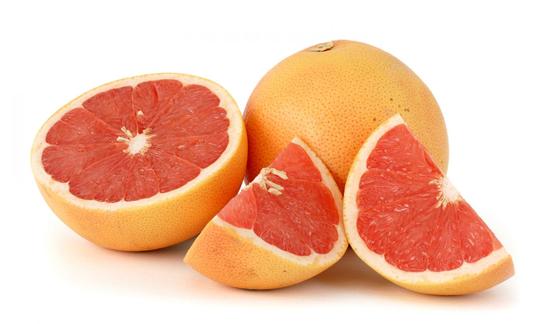

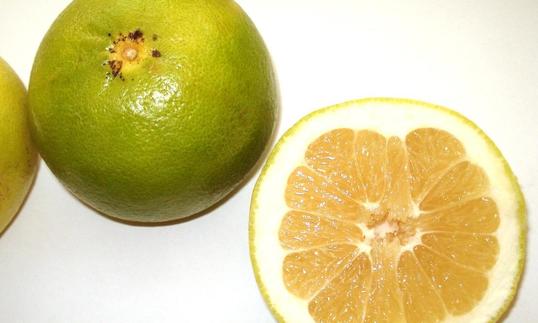

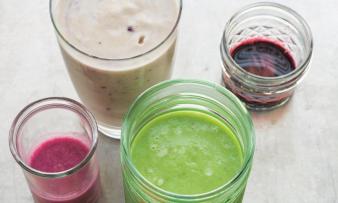
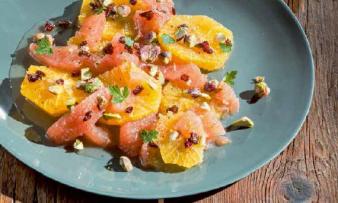
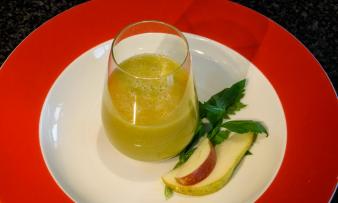





Comments